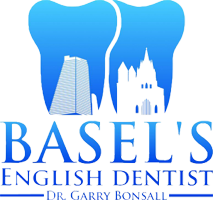Oral cancer screening
Oral Cancer Screening
Michael Douglas, actor, has just recovered from mouth cancer. Cancer can occur in any part of the mouth, tongue, lips, throat, salivary glands, pharynx, larynx, sinus, and other sites located in the head and neck area.
How common is Mouth Cancer?
In the UK 38,000 people are living with a diagnosis of head and neck cancer.
By 2030 in the UK four million people will be living with a diagnosis of cancer.
By 2030 in the UK four million people will be living with a diagnosis of cancer.
What Causes Mouth Cancer?
- Tobacco is the main risk factor of Head & Neck Cancer.
- Tobacco users are 6 times more likely to develop head & neck cancer.
- 75% of mouth and throat cancers occur in tobacco users.
- Alcohol is another common cause of Mouth Cancer.
- 3 in 4 people, who have mouth cancer, smoke and consume alcohol.
- The human papilloma Virus (HPV) is one of the most common virus groups in the world which can lead to mouth cancer.
The Facts
- Oral and pharyngeal cancer is the sixth most common malignancy reported worldwide and one with high mortality ratios among all malignancies.
- The global number of new cases was estimated at 405,318 about two-thirds of them arising in developing countries.
- Highest rates are reported in South Asian countries such as India and Sri Lanka.
- The Indian sub-continent accounts for one-third of the world burden.
- The incidence and mortality from oral cancer is rising in several regions of Europe, Taiwan, Japan and Australia.
- Every year in Europe, around 100,800 people are diagnosed with head and neck cancer and almost 40,000 die from the disease.
- In the USA alone, 30,000 Americans are diagnosed with oral or pharyngeal cancer each year. About 90 percent of head and neck cancers are of the squamous cell variety.
- Although there have been significant improvements in chemotherapy and surgical techniques, the disease is often particularly challenging to treat since most patients present with advanced disease, have secondary tumours and suffer from other co-morbidities.
- Unfortunately 5-year survival rate has not improved (50% overall) for the last few decades except in specialized cancer centres.
- These ‘Mouth Cancers’ have a higher proportion of deaths per number of cases than breast cancer, cervical cancer or skin melanoma.
- In the UK, there were 7,697 cases of mouth, throat and head and neck cancers in 2004.
- The mortality rate is just over 50%, despite treatment, with 2,718 deaths occurring in 2005.
- Mouth Cancer kills one person every 3 hours in the UK because of late detection.
- An increasing number of young people are being affected and 25% of the cases have no associated significant risk factors.
Mouth Cancer – The Signs and Symptoms
In its very early stages, mouth cancers can be almost invisible making it easy to ignore. Chances of survival are improved if the cancer is detected early and rapidly treated. It is important to have self-awareness and to perform regular, self-examinations to help in the early identification.
Common symptoms include:
Common symptoms include:
- A sore or ulcer in the mouth that does not heal within three weeks.
- A lump or overgrowth of tissue anywhere in the mouth
- A white or red patch on the gums, tongue, or lining of the mouth.
- Difficulty in swallowing.
- Difficulty in chewing or moving the jaw or tongue.
- Numbness of the tongue or other area of the mouth.
- A feeling that something is caught in the throat.
- A chronic sore throat or voice change (hoarseness) that persists more than six weeks, particularly smokers over 50 years old and heavy drinkers.
- Swelling of the jaw that causes dentures to fit poorly or become uncomfortable.
- Neck swelling present for more than three weeks.
- Unexplained tooth mobility persisting for more than three weeks – see a dentist urgently.
- Persistent nasal (especially unilateral)l nasal obstruction, particularly associated with mucus (clear, purulent or bloody) discharge causing difficulty breathing through nose.
- Unexplained persistent earache.
Reduce your chances of getting these cancers by:
- Not smoking or chewing tobacco
- Limiting alcohol consumption.
- Having a healthy, low-meat, low-fat, low-sugar diet rich in vitamin C, vegetables, berries, nuts and fruit with servings of wholemeal bread, cereals, peas or beans everyday.
- A high proportion of oropharyngeal cancers in non-smokers and younger adults have been associated with HPV. The mode of transmission may be frequent oral sex in adolescents and young adults
We’ll take time to answer all your questions and provide the information you need.
We’ll give you an honest, realistic appraisal of your dental restorative goals.
There is no obligation, no sales pitch.
After the consultation the decision is up to you.
Schedule your appointment today for your no obligation consultation. Get all the details. If you’re ready to find out what YOUR personal dental care options are, including implants, we’re ready to help.
Patient Testimonials
“It’s not every day one meets such a kind dentist.”
“Thank you for dealing with my dental problems so quickly and painlessly.”
“Dr. Bonsall has given me beautiful teeth and confidence in dentists.”
“I feel like a different person after the wonderful work Dr. Bonsall has done.”
“The first time in 30 years at the dentist without fear.”
“Professionally probably the very best, he means painless.”
